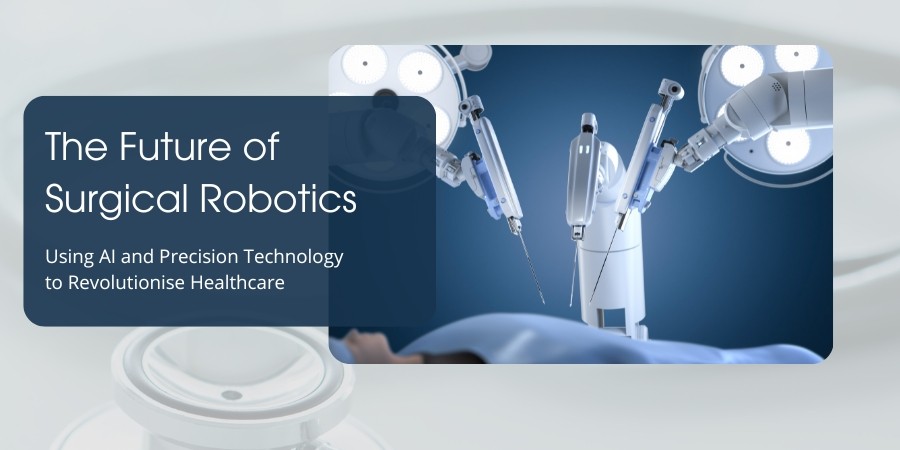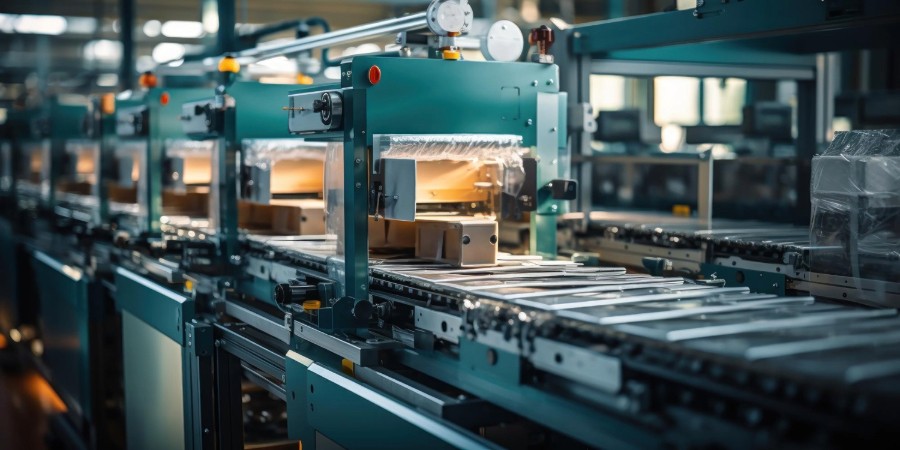An Overview
Digital Twin technology has emerged as a transformative tool in Industry 4.0. It creates a virtual replica of physical entities, which offer valuable insights and facilitate informed decision-making by enabling data visualisation, analysis, and manipulation. Digital Twin is crucial for modern businesses and industries as it bridges the physical and digital realms.
At the core of Industry 4.0, Digital Twin consists of physical entities, virtual replicas, and data integration and analysis. This convergence of physical and digital worlds creates a powerful platform for monitoring and optimising complex systems. The virtual replicas enable the testing of various scenarios, which allows for more informed decision-making and reduced risks.
The potential of Digital Twin goes beyond improving efficiency and reducing costs. Their ability to facilitate stakeholder collaboration and provide real-time insights can lead to innovative solutions and new business models. As such, Digital Twin is increasingly recognised as a game-changing technology that has the potential to revolutionise the way we interact with the world.
The market for Digital Twin in Industry 4.0 is expected to be more than $145 Billion in 2030 from around $15 Billion in 2023, at a CAGR close to 40% from 2023 to 2030.
The growth is mainly driven by the increasing adoption of emerging technologies such as IoT and AI and the rising demand for predictive maintenance and process optimisation.
Key technologies and components of Digital Twin for Industry 4.0:
The Digital Twin technology has emerged as a key enabler of Industry 4.0. It allows businesses to create virtual replicas of physical systems, products, or processes, which provide real-time insights, simulations, and analysis to optimise performance, improve decision-making, and enhance efficiency. Technology has revolutionised businesses' operations and opened up new possibilities for innovation and growth. By leveraging the power of Digital Twin, businesses can gain a deeper understanding of their products and systems, identify potential issues, and take proactive measures to prevent them. This has resulted in increased reliability, reduced downtime, and improved productivity. As such, Digital Twin technology has become an essential tool for businesses looking to stay competitive in today's rapidly evolving marketplace.
Here are some key technologies and components of Digital Twin for Industry 4.0:
- IoT Sensors: IoT sensors are crucial in physical asset management. They can collect real-time temperature, pressure, humidity, and vibration data. This data helps create a Digital Twin that accurately reflects the asset's performance, providing a comprehensive view for businesses and researchers.
- Data Analytics: Data analytics uses advanced technologies like machine learning and AI to analyse sensor data. They detect patterns, anomalies, and trends, predict maintenance needs, and optimise performance. With these analytical tools, businesses gain valuable insights and make data-driven decisions to enhance efficiency and productivity.
- Cloud Computing: Digital Twin often depends on cloud platforms for storing and processing voluminous data. Cloud computing offers scalability and accessibility crucial for real-time analysis and remote access of Digital Twin.
- Simulation and Modeling: Simulation and modelling tools create virtual representations of physical systems and are continuously updated with real-world data. Experts use these technologies to predict complex system behaviours, driving innovation and scientific discovery in diverse fields.
- Edge Computing: In certain situations, it is useful to perform data processing near the data source, also known as the edge, to reduce latency and enhance real-time decision-making. The concept of edge computing is especially beneficial when urgent action is required.
- 3D Visualisation: 3D visualisation enhances the accuracy of predictions by providing a realistic portrayal of the physical system. This technology facilitates the analysis of complex systems, enabling users to explore and analyse them more effectively, leading to better decision-making and improved outcomes.
- Digital Thread: The Digital Twin is a key component of the Digital Thread, connecting all stages of a product's lifecycle to enhance efficiency and collaboration. This allows for seamless information flow between design, manufacturing, operation, and maintenance. The Digital Twin technology provides a virtual representation of the physical product, allowing businesses to test and optimise various scenarios without incurring significant costs. By leveraging this approach, businesses can streamline operations, reduce costs, and improve their bottom line.
- Cybersecurity: Given the delicate nature of the data that Digital Twin collects and processes, it is imperative to implement strong cybersecurity measures. Robust encryption, access control, and intrusion detection systems are essential in safeguarding against cyber threats.
- Communication Protocols: MQTT and OPC UA are standardised communication protocols that enable seamless data exchange between devices, sensors, and the Digital Twin. By leveraging these protocols, businesses can unlock the full potential of IoT, achieving greater efficiency, reduced costs, and improved productivity.
- Augmented Reality (AR) and Virtual Reality (VR): AR/VR tech can integrate with Digital Twin for immersive training, maintenance, and remote monitoring. This enables real-time interaction with virtual objects, improving efficiency, reducing downtime, and enhancing decision-making for better business performance.
- Blockchain: This technology can improve data integrity and traceability in Digital Twin, especially in supply chain and manufacturing scenarios. By using blockchain, businesses can establish a secure and transparent platform for recording and tracking transactions, which ensures compliance with regulations and standards. Blockchain technology in Digital Twin can revolutionise how businesses manage their supply chain and manufacturing processes, leading to greater efficiency, transparency, and trust.
- Human-Machine Interaction: Natural Language Processing (NLP) and conversational AI technologies have revolutionised Digital Twin's utilisation. These technologies offer a means for operators and engineers to gain access to information and insights more efficiently. By enabling users to interact with Digital Twin through voice or text, NLP and conversational AI technologies have made it easier for businesses to optimise their operations. The benefits of these technologies are numerous, and they are becoming increasingly important in various industries.
- Semantic Data Integration: Semantic technologies are crucial in organising and unifying data from disparate sources, facilitating their comprehension and utilisation in decision-making processes. These technologies can structure unstructured data, making extracting valuable insights and knowledge easier. Integrating such technologies in business and academic settings can streamline data management, enhance the accuracy of analyses, and ultimately support more informed and effective decision-making.
How Digital Twin Plays a Vital Role in Industry 4.0?
Digital Twin is vital in Industry 4.0, the fourth industrial revolution. It represents a paradigm shift in manufacturing, integrating digital technologies, data-driven decision-making, and automation. Digital Twin is a virtual replica that optimises performance, improves efficiency, and reduces errors, creating a digital thread from design to operation. They're an indispensable tool for businesses to benefit from digital transformation and stay ahead of the competition.
Digital Twin is a key enabler of this transformation, and here's how they contribute to Industry 4.0:
- Real-Time Monitoring and Control: Digital Twin is a virtual replica of physical assets, processes, or systems. They are designed to continuously collect data from sensors and other sources in the real world, facilitating real-time monitoring and control. This real-time insight optimises operations, reduces downtime, and enhances overall efficiency. These and other benefits make Digital Twin an invaluable tool for professionals in various industries. By leveraging the power of Digital Twin, businesses can gain a competitive edge and drive innovation while improving their bottom line.
- Predictive Maintenance: The analysis of digital twin data enables manufacturers to anticipate equipment or machinery failures. This methodology is popularly known as predictive maintenance, which has been proven to reduce unplanned downtimes, extend the lifespan of assets, and decrease maintenance expenditures. By implementing predictive maintenance, manufacturers can leverage the benefits of data analytics to enhance the reliability and efficiency of their equipment, thereby improving their operational performance and increasing profitability.
- Product Development and Testing: Digital Twin is utilised in product development to simulate and test products in a virtual environment before their physical realisation. This approach expedites the design process, diminishes the costs associated with prototyping, and allows iterative improvements based on simulations.
- Process Optimisation: The digital Twin has emerged as a powerful tool for optimisation, enabling manufacturers to simulate and improve various aspects of their processes. This includes fine-tuning parameters such as temperature, pressure, and flow rates to optimise product quality and reduce waste. Beyond process optimisation, digital Twin is also being utilised for supply chain optimisation and resource allocation. Digital Twin allows manufacturers to make informed decisions, optimise operations, and improve efficiency by simulating and modelling various scenarios.
- Quality Control: Digital Twin can be utilised for real-time monitoring and management of product quality. By comparing the actual data with the virtual Twin's specifications, deviations can be detected and addressed promptly, thereby minimising defects and enhancing the overall quality of the product. This approach can provide valuable insights into quality control and be especially useful in complex manufacturing processes involving multiple variables. Using Digital Twin for quality control can result in significant cost savings and improved customer satisfaction.
- Resource Efficiency: The concept of Industry 4.0 prioritises resource efficiency and sustainability. To achieve these goals, manufacturers can leverage Digital Twin, which enables them to monitor their resource consumption and optimise their energy, water, and raw material usage. In effect, digital Twin provides a platform for manufacturers to closely track and analyse their industrial processes' performance, allowing for identifying areas where resources can be conserved and sustainability can be enhanced.
- Customisation and Personalisation: Digital Twin has enabled manufacturers to provide mass customisation by producing personalised products and components that conform to their digital models. This feature is especially crucial in industries such as automotive and fashion. By leveraging Digital Twin, manufacturers can create individualised products with greater ease, accuracy, and efficiency while still adhering to the constraints of their virtual models. The ability to produce tailor-made products at scale drives innovation and transforms production processes in several sectors.
- Data Analysis and AI Integration: Digital Twin generates massive amounts of data, which can be analysed using advanced analytics and artificial intelligence (AI) techniques. These tools enable businesses and researchers to gain deeper insights, make more accurate predictions, and optimise complex processes. By leveraging the power of digital Twin, organisations can achieve greater efficiency and productivity and gain a competitive edge in their respective industries.
- Remote Operation and Troubleshooting: Digital Twin is a powerful tool for enabling remote operation and troubleshooting equipment and systems. This technology is particularly valuable when physical access to the equipment is limited or threatens safety, such as offshore oil rigs or space exploration. By creating a digital replica of the equipment or system, key performance metrics can be monitored and analysed in real time, enabling operators to make informed decisions and take corrective action where necessary. This capability enhances operational efficiency and reduces the need for physical intervention, ultimately leading to improved safety and cost savings.
- Continuous Improvement: Industry 4.0 uses advanced technologies to enable a highly automated and connected manufacturing environment. Digital Twin is a key enabler of Industry 4.0, providing a feedback loop for ongoing optimisation. Manufacturers can refine their processes and products through Digital Twin as more data is collected and analysed, increasing productivity, quality, and profitability. Digital Twin is becoming increasingly prevalent as manufacturers seek to optimise their operations and stay competitive in an ever-evolving market.
Key digital twin technology providers
Companies across various industries are using Digital Twin for Industry 4.0. Here are some notable examples:
- Siemens: Siemens is a major player in Digital Twin, offering solutions for various industries, including manufacturing, energy, and healthcare. They use Digital Twin to optimise production processes, monitor equipment, and improve efficiency.
- PTC: PTC is a leading product lifecycle management (PLM) software provider. Their PLM software includes a digital twin module that enables businesses to create digital Twins of their products throughout their entire lifecycle, from design to manufacturing to operation and maintenance.
- Dassault Systèmes: Dassault Systèmes is a leading provider of 3D design software. Their 3D design software includes a digital twin module that enables businesses to create digital Twins of their products and systems. These digital twins optimise product design, improve manufacturing processes, and reduce costs.
- Microsoft: Microsoft uses Digital Twin to help cities and businesses manage their infrastructure more effectively. For example, Microsoft's digital twin solutions can monitor traffic conditions in real-time and suggest ways to reduce congestion.
- Auto desk: Autodesk's approach to Digital Twin aligns with Industry 4.0 principles by providing tools and solutions that facilitate the digitisation of design, manufacturing, and operations processes
- Rockwell Automation: Rockwell Automation's focus on Digital Twin aligns with the principles of Industry 4.0 by enabling data-driven decision-making, enhancing operational efficiency, and facilitating the integration of digital technologies into industrial processes.
- Fabrik: Fabrik is an Indian start-up providing digital twin solutions for manufacturing. Their platform collects real-time data from plant machines and systems to visually represent manufacturing processes. This digital Twin can optimise production schedules, predict maintenance needs, and identify potential quality issues.
- Tunnelware: Tunnelware is a German start-up that provides digital Twin for tunnel construction projects. Their platform combines IoT sensors, AI, and machine learning to monitor boring machines and the real-time tunnelling process. This data is used to create a digital twin of the tunnel project, which can be used to identify and mitigate risks, improve safety, and optimise the construction process.
- AllVision: AllVision is a US-based start-up that provides a digital twin platform for railroad management. Their platform collects data from IoT sensors installed on railroad assets, such as mileposts, derailers, crossing guards, and signals. This data creates a digital twin of the railroad network, which can optimise asset utilisation, predict maintenance needs, and improve safety.
Our Perspective
Digital Twin has emerged as a pioneering technology in Industry 4.0, bringing about a transformative shift by enabling real-time insights, predictive capabilities, and advanced risk management tools. This technology has applications across various sectors, from enhancing operational efficiency and reliability to revolutionising product development and optimising urban planning for a smarter and more interconnected world. As technology advances at an unprecedented pace, Digital Twin is poised to play an increasingly central role in shaping the future of industrial processes and operations, making it a crucial tool for businesses to stay ahead of the curve.
Why you should invest in Digital Twin for Industry 4.0 Market Research report?
Market insights are vital for the Digital Twin industry in Industry 4.0 for various reasons. They deeply understand the industry's current and prospects, identify crucial trends and developments, offer competitor analysis, and aid investment planning. Additionally, they provide valuable insights into specific industries, mitigate risks, and refine marketing and sales strategies. Finally, they assist in navigating complex regulatory environments and identifying potential partners. Market research reports are critical in guiding Digital Twin industry companies' strategies and decision-making processes.
Velox Consultants is one of the fastest-growing market research and strategy consulting firms, recently recognised by Clutch. We specialise in providing customised research reports and Go-to-Market (GTM) strategies that cater to the specific needs of companies across the Manufacturing and Technology sectors.
Our team of highly skilled professionals is well-equipped to help your company stay ahead in such a dynamic and competitive market. To learn more about our services or discuss your requirements, please get in touch with us at consult@veloxconsultants.com.





